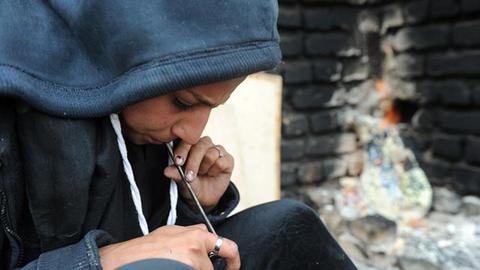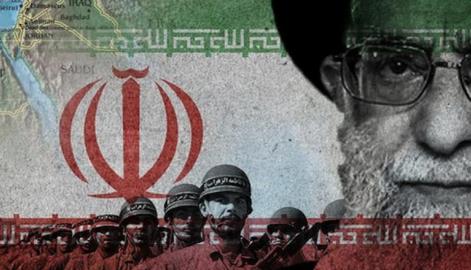Previously: Drugs in Iran: Hopelessness, Drug Use and “Parti Bazi”
The illicit drugs trade in Iran has shaped countless lives, exacerbated by punitive and misguided policies that have left some of society’s most vulnerable in the cold. In an exclusive new series for IranWire, academic Dariush Farahani lifts the lid on an under-reported contemporary crisis.
The aim of this series is to provide an insight into the drugs trade in Iran, including the impact of government policy on the drugs market, and to give a voice to marginalized communities affected by drugs that have been demonized in the media and public discourse.
Across the world and not least in Iran, drug users have been criminalized, stigmatized and treated as sick and malformed elements on the margins of society — a stance that strips them of their humanity and justifies harsh interventions into their lives. In recent years the so-called global “War on Drugs” has been questioned by an increasing number of actors. New human-centered and human rights-oriented policies and interventions are urgently needed to protect the rights of these individuals, and to prevent drug policy from further exacerbating violence, insecurity, and poor health outcomes in affected communities.
This series brings the global drug policy debate to Iran. We begin with an exploration of global drug policy before examining Iranian domestic drug policy in closer detail. Follow-up articles take in the breadth of drug users’ lived experiences in Iran and the haphazard management by government and civil society actors, based on interviews with people in Iran affected by drugs, be it as a user of opium, heroin or methamphetamine (shisheh), or by their involvement in the production, trafficking or distribution of illegal substances.
A constellation of non-governmental organizations (NGOs) and community groups provide treatment services and psychosocial support to drug users in Iran. For the most vulnerable, these organizations are often the only lifeline available. In his latest instalment for IranWire, Dariush Farahani joins an informal meeting of Narcotics Anonymous.
Narcotics Anonymous (NA) is one of the largest civil society organizations supporting drug users in Iran. The body follows the same model as Alcoholics Anonymous (AA) in supporting abstinence-based recovery through a 12-step program. According to the organization’s founders, the first Iranian NA chapter was formed in 1990 but was promptly shut down by the government, which did not approve of its ideological approach.
After several years of careful, coordinated work with Iranian officials, NA re-opened its doors. The service rapidly expanded as it had filled a void for drug users across Iran, giving them access to a group of empathetic people who would welcome them irrespective of their drug use, and would not stigmatize them for their choices, but support them to move out of a life of dependence.
NA has received its fair share of criticism. For one thing, the organization does not distinguish between types of drug in its approach to treatment. In Iran, thousands of people rely on place-holder drugs such as methadone and buprenorphine that are used in evidence-based therapies — known as Opioid Substitution Therapy, or OST — to still their cravings for more harmful drugs such as heroin, helping them to live ordinary lives. To NA, all of these drugs are equivalent, so individuals relying on OST, including the most vulnerable drug users who are trying to break their habit of injecting, are pushed away from their program.
Nevertheless, NA has been a crucial provider of life-saving peer-to-peer support across Iran over the last 30 years. It holds an astonishing 24,000 meetings across Iran each week, held at the same time each day in thousands of local chapters. Although NA is an independent organization, it maintains a good – and vital – working relationship with several arms of the Iranian government, notably the Ministry of Health, the State Welfare Organization and the Drug Control Headquarters.
A Vital Service to Communities
To understand more about the organization, I attend an informal get-together for NA members hosted by a man named Bagher, who has invited friends from several local chapters for a lunch of joojeh kebab at his home. The small house consists of a single open-plan room and a garden. While some attendees begin preparing the barbecue, Bagher and others sit down and talk amongst themselves. The informal meeting opens with each member in turn sharing how long they have been clean – “pak” – from substance use.
All in all, there are about 12 men present. The one with the shortest time “clean” has not used drugs for a month. The one with the longest track record has been clean for 12 years and 10 months.
With the formalities over, members of the group begin to open up about the journeys they have been through, individually and as an organization, to be recognized by society.
“There are now [between] 350,000 and 400,000 NA members in Iran,” Bagher tells me. “Even small cities have an NA. Like other support services – all villages need clinics, schools, and so on – these villages also need NA.
“The government only helps by subsidizing our rent where we hold our meetings. They facilitate the way for us. They give us no direct funding and we don’t want it. It took time to convince the Iranian government about NA’s program.”
Ehsan, another NA member present, chimes in. “We have respect for and listen to doctors, but not necessarily always [when it comes to] addiction,” he says. “They think and claim that they know everything. In NA we don’t cure, we make problems as small as possible until the end of life. We try to ‘inactivate’ the problem.
“You feel worthless [as an addict] and can’t do anything. NA is there, and gives you hope and a sense of self-worth. We sit with one another and share our pains, so that we do not feel lonely. So that the pain is manageable.”
The one who has stayed clean for the shortest amount of time in the group is Amin, who is in his early 20s. He has been a drug user for seven years: five were spent smoking cannabis after being introduced to it by high school friends, and for one and a half he used shisheh (methamphetamine) and LSD as well.
Amin says he was “forced” by his family to attend a residential treatment camp on six or seven occasions, for one to three months each time. But they did not help him quit the habit in the long term.
“I’ve quit using drugs 10 times now,” he tells me. “But I have only managed to stay clean for one month at most. I’m not sure how much my family paid the camps to hold me there.
“My family knew from my behavior that I was using drugs. From a young age, I was seeking things to give me pleasure. I overdosed and went to the hospital, and from there they referred me to NA. I only realised I was addicted when I joined NA and for the two years I have been a member, it has been very important to have NA members around me."
Using shisheh in particular, he said, had taken a “very large” toll on his mental health. “The first time I used shisheh I enjoyed it a lot. It was one and a half years ago. In the camp where I was staying at the time, everyone was talking about shisheh and how good it was, and so I went to find some and try it as soon as I got out.
“Ultimately, if I want to quit it is up to myself, the government doesn’t care or support me. They just round us up and put us in these camps for months.
“My family still don’t trust me with a phone, money, anything. They fear I will get back into drugs and so they limit my possibilities to do so. They don’t want me to go to university because it’s a mixed-sex environment. I am so limited now. I can’t do anything anymore, but I still have big dreams.”
From Alcohol and Cigarettes to Shisheh
Morteza, a 28-year-old and a more seasoned drug user, has now been clean for two years. For 12 years he was heavily abusing metamphetamine while also dealing the drug, meaning he had constant access to a supply.
“I started with alcohol and cigarettes,” he recalls. “I used to work selling flowers over Eid. It was hard work, so I started smoking shisheh to be able to stay awake. Then I got involved with a very bad family, and started selling drugs for them: mainly heroin and shisheh.
“At first, I might have used drugs once every two months. Then it turned to once a week. By the end, I completely lost control and was consuming about five grams of shisheh a day. I couldn’t go for 10 minutes without shisheh.
“Later I worked for the Red Crescent, a good job. But I couldn’t go to work anymore as the drugs took over and decided my life for me. For five years I did not see my family. My only thoughts were how and when I could use. I was so tired of life. I was stealing, doing all kinds of things for drugs.
“One day I was sitting and using, and I heard a knock at the door. Camp wardens came and took us all to one of the camps; my family had given them approval.”
After 25 days in the camp, he said, he attended an NA meeting. He has been going to NA sessions every night since then.
Asked where the drugs he had been selling came from, Morteza says: “Shisheh is produced in Tehran, heroin comes from Afghanistan. I called around to find the best stuff.
“At that point I had already drowned in drugs. There was nothing to life but finding, selling, and consuming. I couldn’t save anything; I gave away the keys to my car for half a kilogram of meth.
“I was a member of a group, like a mafia, for drugs. I wanted to get out but couldn’t because of my dependence. We divided the drugs for sale, very large amounts, and hid them so that the police wouldn’t find them.”
On one occasion, he says, six or seven police officers raided his home at 9am. He had seen them coming and stuffed a handful of shisheh into a pillow. “They knew what they were doing. They turned the house upside down, even emptied our bags of rice. They didn’t find anything but kept me under arrest for two days. Today, I realise that God saved me; 10 grams of shisheh could have put me away for 10 years.”
Morteza shows me photographs of when he used drugs, before and after he quit. The difference is striking. In the photos, he looks like a disheveled man in his mid-40s.
“I am 28 years old now,” he says. “I was 16 the first time I consumed. Back then it was tramadol and painkillers and methadone, and after a while all of that became normal. Then it was cannabis, and I mixed different drugs for three or four years. After that I started using shisheh.
“I have been clean for 2 years, 1 month, and 19 days. I survive hour by hour. I have gone through more pain in quitting drugs than I experienced when using them. I lived to use drugs, and I used drugs in order to live.”
Also in the series:
Drugs in Iran: A New IranWire Series
Selling Heroin After the Revolution
Drugs in Iran: Hopelessness, Drug Use and “Parti Bazi”
The "Moratorium" on the Death Penalty
Inside the Government-Sponsored “Treatment Camps”
visit the accountability section
In this section of Iran Wire, you can contact the officials and launch your campaign for various problems


























comments